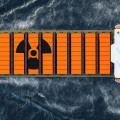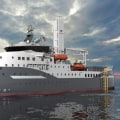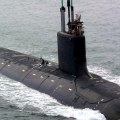The Russian Navy is renowned for its strength underwater, and it is no surprise that it has a large number of nuclear-powered ships. Currently, the Russian Navy consists of 59 ships, including 12 nuclear-powered ballistic missile submarines (SSBN) and nine nuclear-powered cruise missile (SSGN) submarines. These nuclear ships are not used for international trade, but rather for the deployment of around 1,500 Russian warheads. The first Russian submarines were powered by PWR VM-A, which used 20-21% enriched uranium fuel and produced 70 MWt.
There have been reports that dismantled Russian nuclear submarines have been used to provide electricity to remote communities and oil exploration companies in the Siberian Arctic regions. The United States has fewer ships than Russia, but they are larger in size. For example, the US Navy has 10 aircraft carriers of 100,000 tons each and 62 Arleigh Burke class destroyers, weighing almost 10,000 tons each. The widest 33 m beam on the waterline will coincide with the 70,000 ton ships for which they are designed to clear the way.
The drastic reduction of the Russian Navy's ability to operate at sea has affected its credibility as a submarine threat. However, Russia is still investing in research and development activities to keep up with Western technologies and even surpass them in some cases. Cosco is currently in talks with China's nuclear authority to develop nuclear-powered cargo ships. The development of nuclear merchant ships began in the 1950s but has not been successful commercially.
Russia only has one aircraft carrier, the Soviet Union Fleet Admiral Kuznetsov, which weighs 55,000 tons and 13 destroyers, the largest of which weigh approximately 7,000 tons. The Russian, US and British navies rely on steam turbine propulsion while the French and Chinese use turbines to generate electricity for propulsion. President Putin has placed Russia's nuclear forces on special alert, raising concern around the world. The MH-1A was a floating nuclear power plant (FNPP) moored in Gatun Lake in Panama Canal area.
The submarines built after the Cold War are considered to be the best Russia has ever manufactured and are first-class ships on par with their NATO counterparts.



